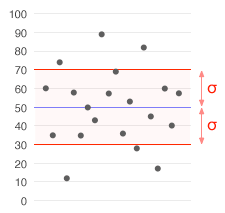Phylogenetic mixed models have mainly been applied to traits which are assumed to be normally distributed (for exceptions, see Felsenstein, 2005; Naya et al., 2006). Generalized linear mixed models extend the linear mixed model to non-Gaussian responses, although model fitting has proved more difficult because the likelihood cannot be obtained in closed form. MCMC techniques solve this
problem by breaking the high-dimensional joint distribution into a series of lower dimensional conditional distributions which are easier to sample from. By repeatedly sampling from these conditional distributions it is possible to very accurately approximate the complete joint distribution, and thereby extract things of interest (often marginal distributions).
Hadfield, J. D., & Nakagawa, S. (2010). General quantitative genetic methods for comparative biology: Phylogenies, taxonomies and multi-trait models for continuous and categorical characters. Journal of Evolutionary Biology, 23(3), 494-508.
2.
The major reason for the popularity of mixed modelling is probably its ability to account for statistical non-independence of data by having random effects as well as fixed effects (the name ‘mixed-effects’ originated from combining these two types of effects) (McCulloch and Searle, 2002). It is difficult to think of an example of any dataset where the data points would be truly independent from one another.
http://www.sciencedirect.com/science/article/pii/S0149763410001028
3.
An important advantage of the mixed model approach relates to the statistical inferences drawn from non-normal data. To date, in neurosciences, non-parametric (NP) tests such as Mann-Whitney and Kruskal–Wallis tests have been often used to deal with small samples sizes, where normality cannot be tested, or with truly non-normally distributed data (Janusonis, 2009)
4.
To test for a genetic change in the population, we used Bayesian methods. Use of Bayesian methods allows the time trends to be estimated directly instead of requiring statistics to be based on the best linear unbiased predictions (BLUPs) from a linear model, which incurs problems in terms of error propagation (Ovaskainen et al., 2008; Hadfield, 2010).
J . EVOL. BI O L . 23 ( 2 0 1 0 ) 935–944
http://onlinelibrary.wiley.com/doi/10.1111/j.1420-9101.2010.01959.x/abstract
5.
Our dataset allowed us to estimate the variance in offspring sex ratio, both at ca 6 days post-hatching and at independence from parental care, and to test how much of the observed variation in sex ratio was accounted for by additive genetic variance as opposed to environmental/non-additive genetic and sampling variance.



















